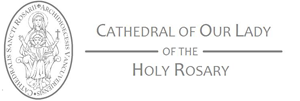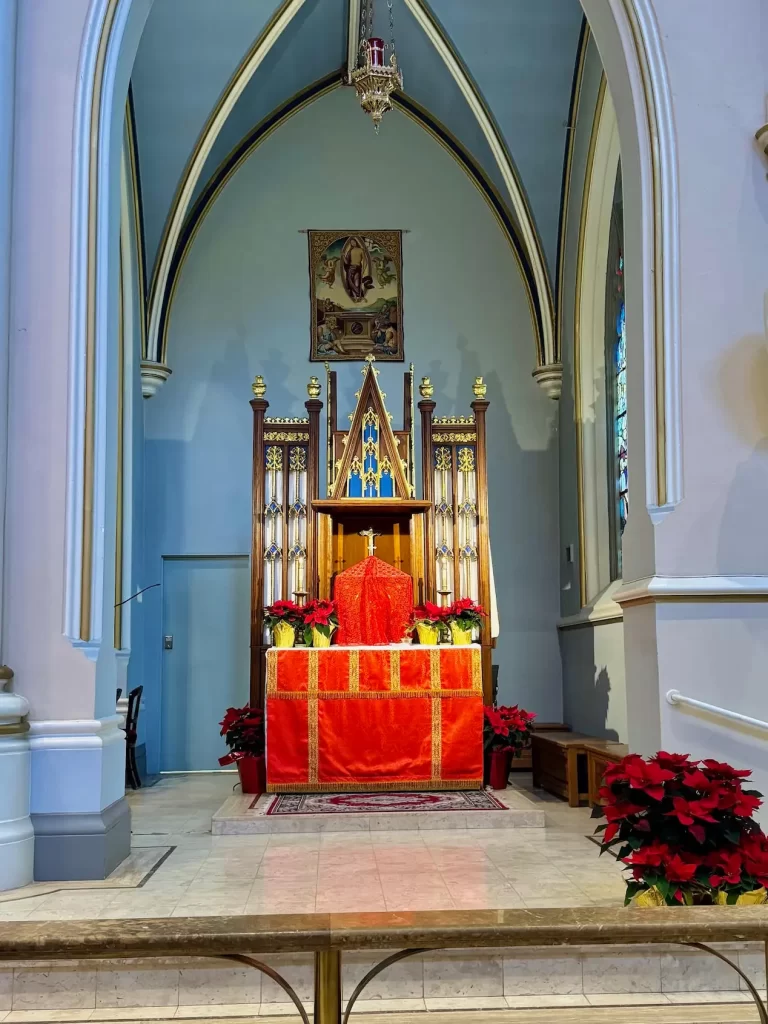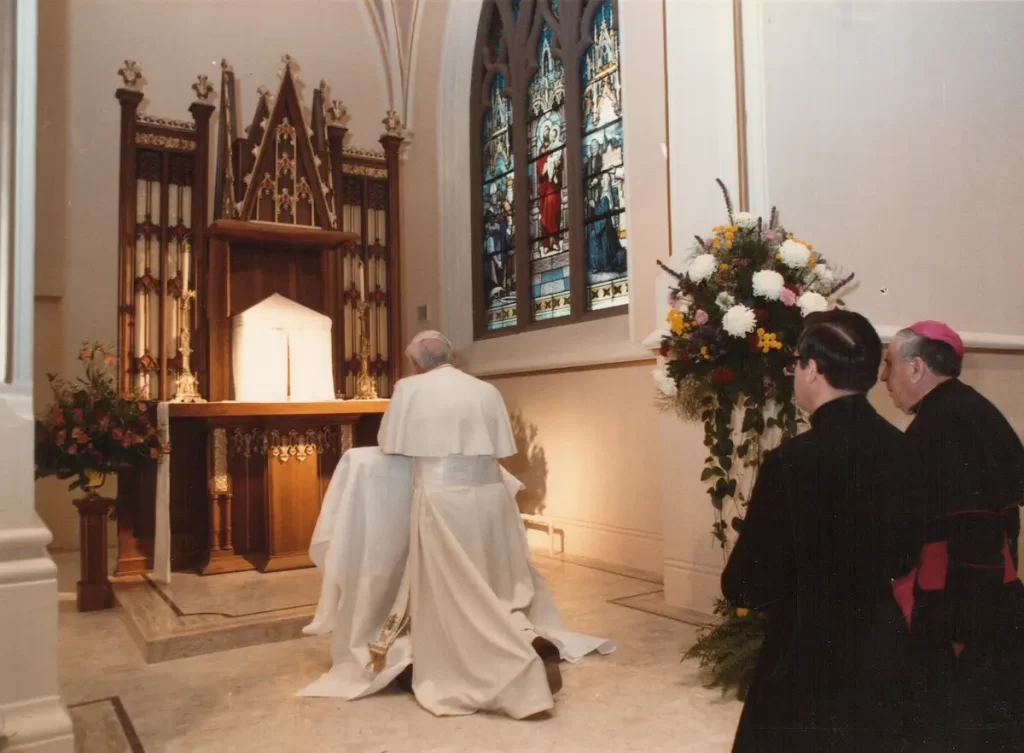HRC Tour
The Altar of the Tabernacle
The tabernacle, is a sacred receptacle usually found on the main altar of a Catholic church. Its main function is to guard the Eucharist. When we enter a church and see the little red light on near the altar, it is a sign that Our Lord is present in the tabernacle, waiting for us in silence and humility.
The Real Presence of Christ
The doctrine of the Real Presence holds that Christ is fully and truly present in the Eucharist. When a Catholic enters a church and stands before the tabernacle, he stands before the very presence of Christ in body, blood, soul and divinity. It is not a symbol or a mere reminder, but the Church firmly believes in a substantial and living presence of Jesus. This is the foundation of devotion to the tabernacle and the reason why Catholics often genuflect when passing in front of it.
The Altar of the Tabernacle
HRC Tour
The tabernacle, is a sacred receptacle usually found on the main altar of a Catholic church. Its main function is to guard the Eucharist. When we enter a church and see the little red light on near the altar, it is a sign that Our Lord is present in the tabernacle, waiting for us in silence and humility.
The Real Presence of Christ
The doctrine of the Real Presence holds that Christ is fully and truly present in the Eucharist. When a Catholic enters a church and stands before the tabernacle, he stands before the very presence of Christ in body, blood, soul and divinity. It is not a symbol or a mere reminder, but the Church firmly believes in a substantial and living presence of Jesus. This is the foundation of devotion to the tabernacle and the reason why Catholics often genuflect when passing in front of it.
The Tabernacle, a place of prayer
The tabernacle also symbolises Jesus’ desire to remain with us, as he said in the Gospel:
“I will be with you all the days until the end of the world’
(Matthew 28:20).
His abiding in the tabernacle is a tangible sign of this faithful love. From this perspective, the tabernacle becomes a place of intimate encounter, where the faithful can present themselves as they are to Christ, who welcomes them and listens to them. It is a place for silence, personal prayer and inner peace.
History of the tabernacle
The history of the tabernacle goes back to the earliest days of Christianity, although its form and meaning have evolved over time. At first, early Christians reserved the Eucharist in their homes so that they could receive communion in times of persecution, when church gatherings were dangerous. With the legalisation of Christianity in the Roman Empire in the 4th century, the practice of reserving the Blessed Sacrament in churches began to develop, a gesture that expressed both reverence and caution against desecration.
In the Middle Ages, the tabernacle became a fixed and highly visible structure in churches, often richly ornamented, as a symbol of Christ’s kingship. Its presence was a constant reminder that Jesus was truly present, a key concept in Eucharistic devotion.
With the Council of Trent in the 16th century, the Church reaffirmed the belief in the real presence of Christ in the Eucharist, thus giving new impetus to the practice of adoration of the Blessed Sacrament. The reservation of the Eucharist in the tabernacle, surrounded by great reverence and symbolism, was definitively established in the liturgical tradition of the Catholic Church.
History of the tabernacle
The history of the tabernacle goes back to the earliest days of Christianity, although its form and meaning have evolved over time. At first, early Christians reserved the Eucharist in their homes so that they could receive communion in times of persecution, when church gatherings were dangerous. With the legalisation of Christianity in the Roman Empire in the 4th century, the practice of reserving the Blessed Sacrament in churches began to develop, a gesture that expressed both reverence and caution against desecration.
In the Middle Ages, the tabernacle became a fixed and highly visible structure in churches, often richly ornamented, as a symbol of Christ’s kingship. Its presence was a constant reminder that Jesus was truly present, a key concept in Eucharistic devotion.
With the Council of Trent in the 16th century, the Church reaffirmed the belief in the real presence of Christ in the Eucharist, thus giving new impetus to the practice of adoration of the Blessed Sacrament. The reservation of the Eucharist in the tabernacle, surrounded by great reverence and symbolism, was definitively established in the liturgical tradition of the Catholic Church.



